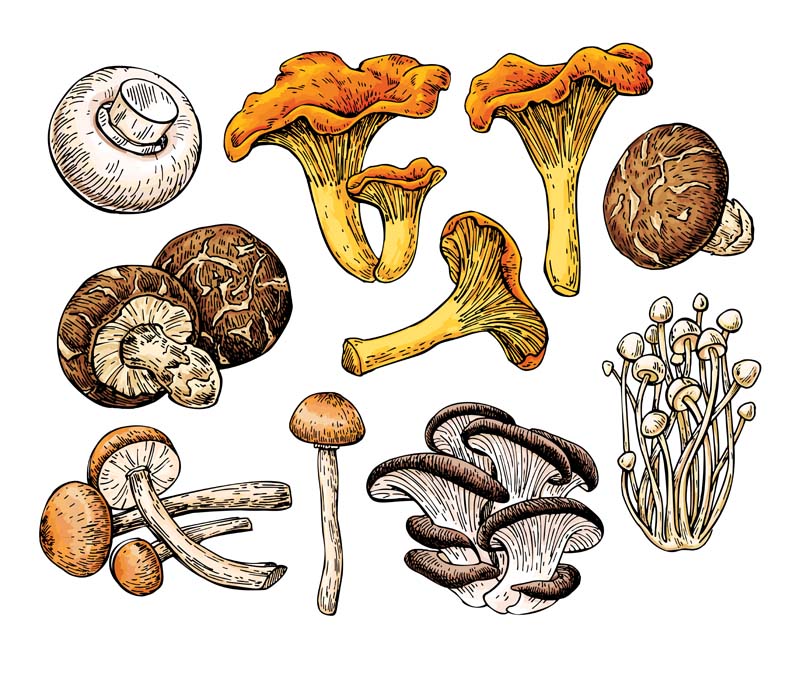
Mushrooms are incredible organisms that do important work in nature, like breaking down dead plants and recycling nutrients. But what’s really interesting about mushrooms is how they reproduce and spread. This happens through tiny particles called spores. In this guide, we’ll explore how mushrooms produce spores and the different ways these spores are dispersed or spread out.
How Do Mushrooms Produce Spores?
Spores are like the seeds of mushrooms. They are tiny and hold everything needed to grow a new mushroom under the right conditions. The process of making spores happens in the mushroom’s fruiting body—the part we see above the ground.
Basidiomycetes (Common Mushrooms):
Most mushrooms we’re familiar with, like button mushrooms and shiitakes, belong to a group called Basidiomycetes. In these mushrooms, spores are produced on special cells called basidia, found on the gills (the thin, blade-like structures) under the mushroom cap. Each basidium produces a few spores, and a single mushroom can produce millions or even billions of spores.
Ascomycetes (Morels and Truffles):
Another type of fungi, called Ascomycetes, includes morels and truffles. In these fungi, spores are made inside tiny sacs called asci. When the spores are ready, these sacs burst open, releasing the spores.
Characteristics of Spores:
Mushroom spores are extremely small and come in different shapes and colors, depending on the mushroom species. They have a tough outer shell that protects them from harsh conditions, like drying out or being damaged by sunlight.
How Are Mushroom Spores Dispersed?
After spores are produced, they need to find new places to grow. Fungi have developed several ways to spread their spores over wide areas, ensuring they can grow in different environments.
Wind Dispersal:
The most common way spores are spread is by the wind. Mushrooms release their spores into the air from the gills or pores under their caps. These spores are so light that even a gentle breeze can carry them far away. Some spores can float in the air for a long time before they settle down.
Animal Dispersal:
Animals can also help spread mushroom spores. Some fungi produce mushrooms that animals like to eat or that have strong smells to attract animals. For example, truffles produce a smell that pigs and squirrels find irresistible. These animals dig up the truffles, eat them, and then spread the spores in their droppings. Other mushrooms have spores that stick to an animal’s fur or feet and get carried to new places.
Water Dispersal:
Water is another way spores can spread. Some mushrooms grow near water, and their spores are carried away by rain, streams, or even drops of dew. Certain fungi, like bird’s nest fungi, have a clever way of using water to spread their spores. They look like tiny cups filled with spores, and when a raindrop hits the cup, it splashes the spores out and spreads them around.
Self-Propelled Dispersal:
Some mushrooms have a built-in way to launch their spores into the air. Puffball mushrooms, for example, release a cloud of spores when they’re disturbed, like when rain hits them or when an animal steps on them. This helps spread the spores to new locations.
Conclusion
Mushrooms have an amazing ability to reproduce and spread through the production and dispersal of spores. By producing millions of spores and using wind, animals, water, and even self-launching mechanisms, mushrooms can spread their spores far and wide. This allows them to grow in many different environments, helping to keep ecosystems healthy and balanced.
